Holm Oak Tree
- October 4, 2023
- 0 comment

The Holm Oak, scientifically classified as Quercus ilex, stands as a formidable and enduring presence in the landscapes of southern Europe, North Africa, and parts of Asia. This evergreen tree, a member of the beech family (Fagaceae), is celebrated for its adaptability and resilience in various climates and soil conditions. Characterized by its glossy, leathery leaves, which boast a rich dark green color and feature spiky margins, the Holm Oak displays a distinctive aesthetic. The bark of the tree is typically dark gray and develops deep furrows as it matures, contributing to its robust appearance. Reaching an impressive height of 20 to 25 meters, the Holm Oak forms a broad and dense crown, providing generous shade to the surrounding environment.
Beyond its visual appeal, this species has garnered ecological importance for its capacity to withstand challenging conditions, including drought and poor soil quality. In addition to its ecological role, the Holm Oak holds cultural significance, being utilized in traditional practices such as cork harvesting. Certain varieties of Holm Oak are employed in cork production, emphasizing its multifaceted contributions to both ecosystems and human activities. Overall, the Holm Oak stands as a testament to nature’s resilience and adaptability, symbolizing the interconnectedness of the environment and human practices in the regions it inhabits.

| Characteristic | Description |
| Scientific Name | Quercus ilex |
| Family | Fagaceae |
| Genus | Quercus |
| Height | 20-60 feet |
| Spread | 20-40 feet |
| Sun exposure | Full sun to partial shade |
| Adaptability | Thrives in various climates and soil types |
| Longevity | Can live for several centuries, showcasing the tree’s longevity. |
| Growth Rate | Generally slow to moderate, with a steady increase in height over the years. |
| Soil Preferences | Exhibits versatility in soil preferences but generally prefers well-drained soil. |
| Bark | Dark gray; develops deep furrows with maturity |
A Brief History

The Holm Oak tree, scientifically known as Quercus ilex, boasts a rich history deeply intertwined with the landscapes of southern Europe, North Africa, and parts of Asia. This resilient and evergreen species has been a steadfast companion to various civilizations, witnessing the passage of time and adapting to diverse environmental conditions. From its cultural significance in traditional practices to its role in shaping local ecosystems, the Holm Oak has left an indelible mark on the regions it calls home.
Color/Appearance
One cannot help but be captivated by the striking color and appearance of the Holm Oak. Its glossy, leathery leaves, adorned in a deep shade of green with spiky margins, create a visual spectacle. The dark gray bark, etched with deep furrows as the tree matures, adds to its robust and distinguished aesthetic. This combination of features contributes to the tree’s allure, making it a sought-after presence in landscapes and urban environments.
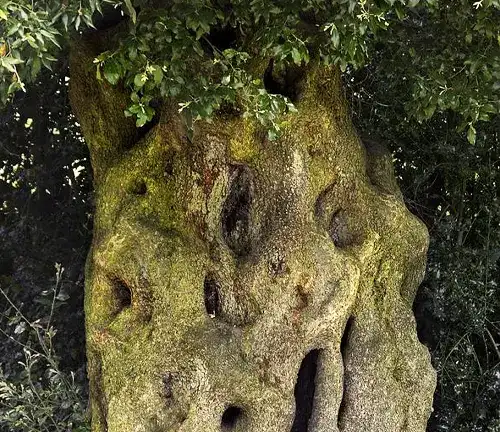
Botanical Features
Delving into the botanical intricacies of the Holm Oak reveals a tree of remarkable adaptability and resilience. From inconspicuous spring flowers to the development of acorns, each stage of the Holm Oak’s life cycle tells a story of nature’s ingenuity. The slow to moderate growth rate, coupled with the longevity of the tree, showcases the remarkable endurance embedded in its biological fabric.
Cultivation and Care
For those looking to cultivate the Holm Oak, understanding its preferences is crucial. Thriving in various climates and soil types, this species demands attention to factors such as well-drained soil and periodic watering. A resilient tree, it can withstand drought conditions and exhibits fire resistance, making it an attractive choice for landscaping in diverse environments.

Ecological Importance
Beyond its ornamental value, the Holm Oak plays a vital role in maintaining ecological balance. As a native species in the Mediterranean region, it contributes to the biodiversity of local ecosystems. The tree’s adaptability to challenging conditions, including drought, enhances its ecological importance, acting as a stabilizing force in environments prone to aridity.


Wood Products and Applications

The tree’s bark also plays a part in sustainable practices, supporting cork production and adding economic significance. Holm Oak’s workability makes it a favorite among artisans, who create decorative pieces with attractive grain patterns. From culinary applications in slow-burning charcoal production to enhancing outdoor landscapes with decay-resistant structures, Holm Oak wood weaves a narrative of strength, adaptability, and enduring quality across diverse industries.
Holm Oak wood, sourced from the resilient Quercus ilex, showcases remarkable versatility across various applications. Renowned for its durability, it serves as a sturdy foundation in furniture, crafting enduring pieces that stand the test of time. Transforming into resilient tool handles, Holm Oak wood provides a reliable grip for a range of implements. In the construction industry, its role extends to structural components like beams and joists, contributing to the stability of architectural projects.
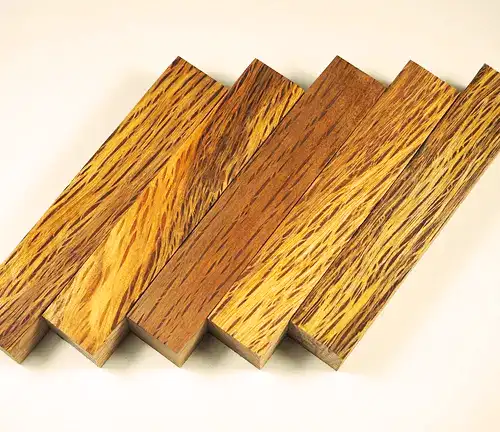
Culinary Applications
Culinary applications of Holm Oak trees, centered around their acorns, offer a unique and historically significant dimension to gastronomy. Acorns, the nuts produced by these trees, can be processed into flour after removing bitter tannins, thus becoming a versatile ingredient. This acorn flour is traditionally used in recipes for bread and pastries, imparting a distinctive nutty flavor to baked goods. Furthermore, roasted and ground acorns can serve as a caffeine-free coffee substitute, offering a coffee-like flavor with its own unique character. Holm Oak acorns can also find their way into savory dishes, enriching soups, stews, and side dishes with their earthy richness. While not a mainstream culinary staple, the Holm Oak’s culinary potential appeals to those with a taste for exploration and a desire to embrace the unique flavors and traditions associated with this tree.

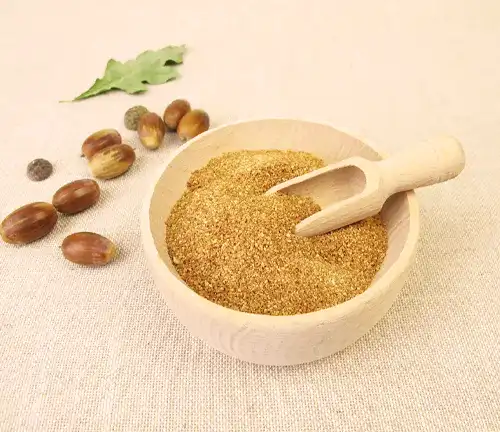
Benefits
The benefits of the Holm Oak extend beyond the visual and practical. As a resilient species, it contributes to soil stability, aids in preventing erosion, and provides habitat and sustenance for wildlife. Furthermore, the tree’s adaptability to urban environments makes it a valuable asset in landscaping, offering shade and aesthetic appeal while requiring relatively low maintenance.

In conclusion, the Holm Oak stands as a multifaceted entity, weaving together history, aesthetics, ecology, and practical applications. From its humble beginnings as a seed to its role in shaping landscapes and cultures, the Holm Oak’s journey is one of endurance, adaptability, and enduring significance.
Frequently Asked Questions (FAQs)
- Can I Use Holm Oak Wood for Indoor Furniture?
Yes, Holm Oak wood is suitable for indoor furniture. Its durable and hard nature makes it a reliable choice for crafting tables, chairs, and other pieces. The wood’s attractive grain pattern also adds to its aesthetic appeal. - Are All Holm Oaks Suitable for Cork Production?
No, not all Holm Oaks are utilized in cork production. While certain varieties are employed, the primary species associated with cork production is the cork oak (Quercus suber). The bark of Holm Oak, however, has been used in limited instances for cork production. - Do Holm Oak Acorns Have Culinary Uses?
Yes, Holm Oak acorns have culinary applications. After proper processing to remove bitter tannins, acorns can be ground into flour and used in various recipes such as bread, pastries, and even savory dishes. Additionally, they can be roasted and ground as a coffee substitute. - Is Holm Oak Suitable for Urban Landscaping?
Yes, Holm Oak is well-suited for urban landscaping. Its adaptability to various climates and soil types, coupled with its ability to withstand drought, makes it an attractive choice for parks, gardens, and other urban green spaces. The tree provides shade and contributes to the aesthetic appeal of urban environments. - Can I Grow Holm Oak in a Container?
While Holm Oaks are typically large trees, certain dwarf and compact varieties can be grown in containers. However, it’s crucial to provide proper care, including adequate watering and suitable soil conditions. Container-grown Holm Oaks can be used to enhance patios, balconies, or small outdoor spaces.



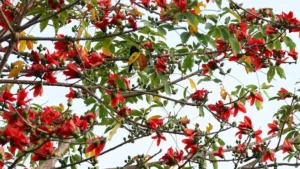

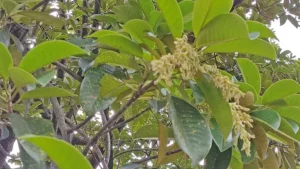



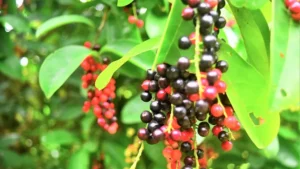
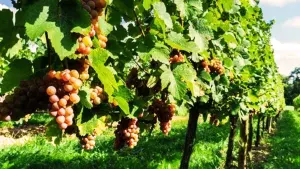



Leave your comment